Cedar Bog Nature Preserve. All photos by Mathew Allen, unless otherwise specified.
If nature preserves got grades, Cedar Bog would merit an A+. The wetland became Ohio’s first designated nature preserve back in 1942, and today, it’s one of America’s prehistoric treasures and a National Natural Landmark. Although Cedar Bog covers only 450 acres, it’s regarded as Ohio’s largest and best boreal and fen complex and boasts the greatest plant diversity of any place in the state, harboring an amazing 40 percent of the rare and endangered plant species in Ohio.
“Cedar Bog is considered by some to be the crown jewel of Ohio’s natural areas,” says Site Manager Mike Crackel, “and that’s high praise because this state has so many incredible preserves and natural areas.”
Schedule a tour of Cedar Bog Nature Preserve
A Gift from the Glaciers
Poised between two glacial moraines in Southwest Ohio’s Mad River Valley, Cedar Bog is a relic of the Ice Age when glaciers advanced and retreated in successive waves over present-day Ohio. The massive ice sheets flattened much of the landscape, ground boulders into stones and pushed boreal plants out of northerly latitudes.
“Northern white cedar is our namesake because the trees grew here from seeds deposited by the glaciers,” says Crackel.
Cedar Bog offers a glimpse into what the landscape looked like during the waning Ice Age when it was home to mastodons, giant ground sloths and beavers the size of bears. Learn more about why northern white cedars flourish here inside the Education Center.
The glaciers also buried the ancient and mighty Teays River and filled it with sand and limestone gravel that hold enormous amounts of water. The cool, alkaline groundwater continually rises to the surface, creating a microclimate favorable to the cedars and other Ice Age transplants — including thirsty sedges, dwarf birch and showy lady’s slipper orchids — in Cedar Bog.
“The water is our lifeblood,” notes Site Manager Mike Crackel. “Without that deep, underground aquifer, Cedar Bog would not exist."
At the Education Center, you’ll also learn that Cedar Bog isn’t a bog. It’s actually a fen that was misnamed decades ago. Bogs and fens both contain water, so what’s the difference? Since their distinctions involve geology, hydrology and even botany, the Education Center supplies a catchy phrase to help you understand: bogs clog and fens flush. In a bog, water accumulates, but in a fen, water simply flows through.
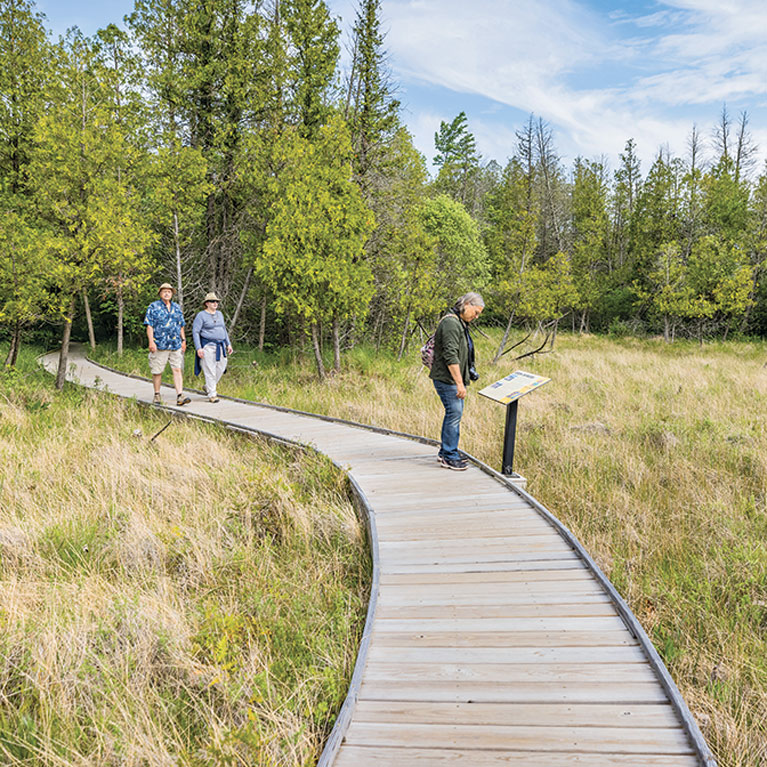


Take a Walk on the Wild Side
Cedar Bog’s boardwalk trail is open daily during daylight hours. Flat, straight and ADA accessible, the boardwalk loops through Cedar Bog for 1.2 miles, and takes you through habitats that include a rare sedge meadow, a thick cedar swamp and a hardwood swamp where towering tulip trees reach for the sky.
“I tell people to slow down and take their time on the boardwalk,” Crackel says. “They should look up, down and around and use all their senses except touch, because everything here is protected under state law.”
While you can’t pick flowers or catch butterflies at Cedar Bog, you certainly can hear the gobble of a wild turkey, the flute-like call of a wood thrush, the trills of grey treefrogs looking for a mate and the surprisingly loud chirps of thumbnail-sized spring peeper frogs. Keep a sharp eye out for carnivorous plants like roundleaf sundew, a tiny boreal that traps insects on its sticky leaves. You might even spot an endangered Elfin Skimmer dragonfly darting among the sedges. Only three-fourths of an inch long, it’s the smallest dragonfly in North America but quite colorful, for males are steel blue and females sport yellow and black striped tails.
One creature you’ll have no trouble seeing is the five-lined skink, a short-legged lizard that loves to scurry across the boardwalk all summer long. “They’re very quick but will stop running and wait long enough for you to take a picture,” says Crackel.
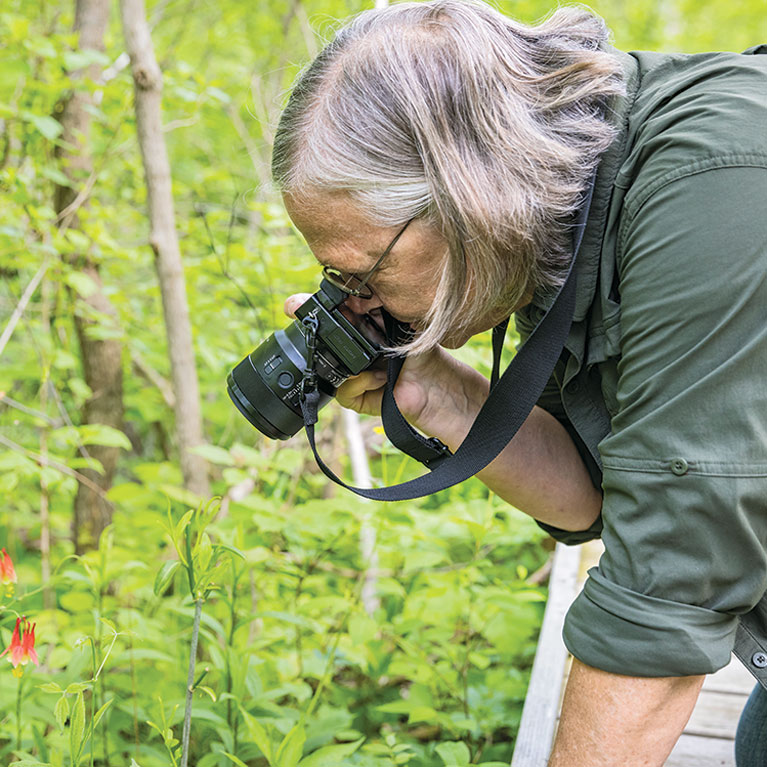
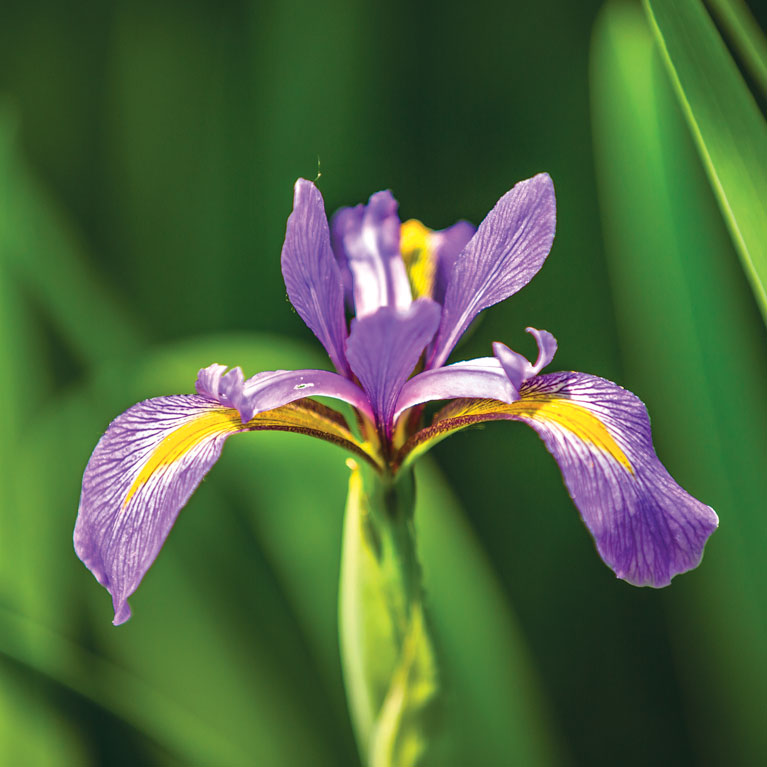
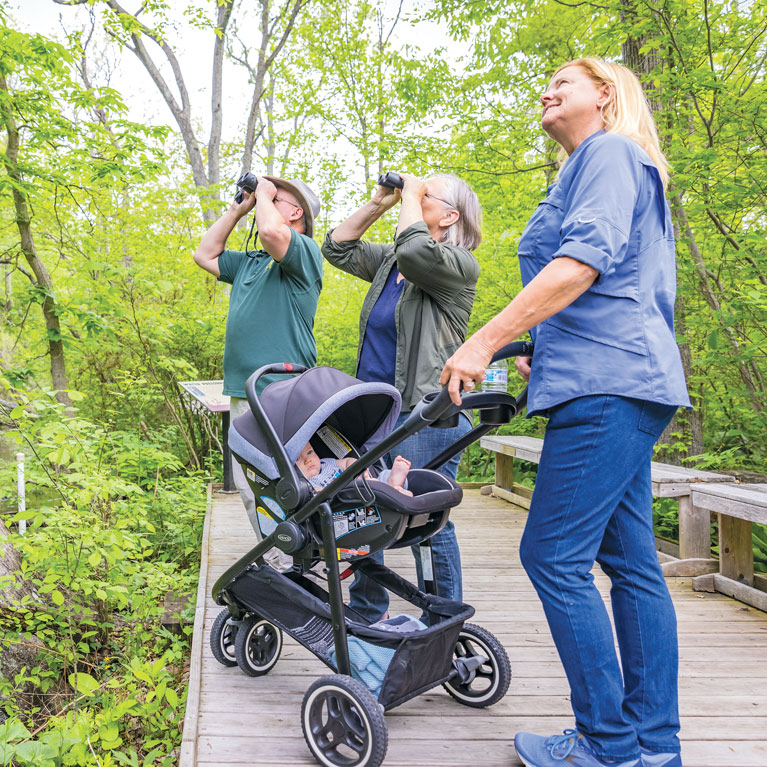
Fen-tastic Blooms in Every Season
In addition to its northern plants, climate changes — including a period of global warming that occurred a few thousand years ago — introduced prairie and Atlantic coastal vegetation into Cedar Bog. “Those three types of plants now thrive side by side in this environment,” says Crackel. “That’s very unusual and one of the great things about Cedar Bog.”
For visitors, the beautiful result of that extraordinary plant population is Cedar Bog’s incomparably varied, constantly changing array of wildflowers. Go there in late January or February and you’ll see deer tracks on the boardwalk as well as Ohio’s earliest blooming wildflower, the skunk cabbage, poking its head through the snow. In the spring, yellow marsh marigolds blanket the swamp forest, while Ohio’s state wildflower, large-flowered trillium, brandishes white blossoms that gradually turn pink. When June arrives, nature lovers come from far and wide for the spectacle of tall, magenta and white showy lady slippers blooming at the same time as much shorter but equally vivid grass pink orchids. During the popular Orchid Walk, you’ll find naturalists stationed along the boardwalk ready to answer questions.
Cedar Bog’s summertime show continues as prairie dock shoots up high, bare stalks crowned by yellow flowerheads, and queen-of-the-prairie lives up to its royal name with magnificent plumes of flowers that resemble pink cotton candy. Then as tree leaves change to russet and the sedges turn brown, goldenrod and sky-blue lesser fringed gentians stunningly punctuate the preserve’s autumn palette. Cedar Bog’s year-long parade of colors demonstrates the enduring appeal of a singularly splendid place that represents a vanished world yet remains fresh, dynamic and alive.
“You can come here every day and see something new each time,” Site Manager Mike Crackel says.
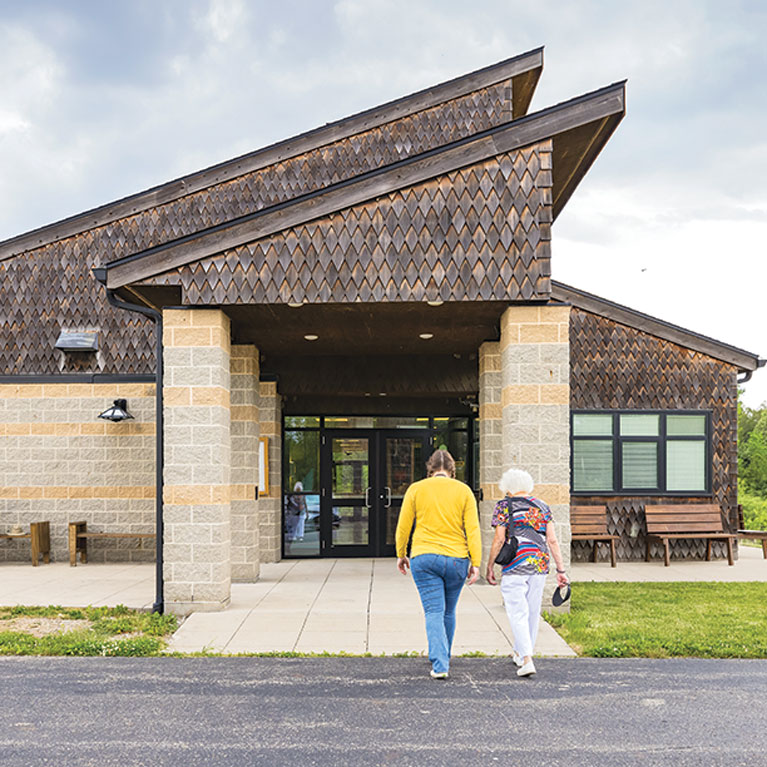


Get Connected!
Watch for regular updates, follow Cedar Bog on Facebook! Check the calendar for events. Find ways to get involved and feel free to contact the Cedar Bog staff with any questions.
Nature Center
Searching for more living history?
These nearby sites will round out a day of adventuring.
Learn about African American history and culture through artifacts and exhibits that depict the Black experience at this center
in Wilberforce.
2,000 years of Ohio’s history are preserved in Piqua, from an American Indian mound to early 1800s structures and part of the Miami and Erie Canal.
This living history town in Columbus is full of villagers and artisans who will help paint a picture of what life was like in the 1890s.
